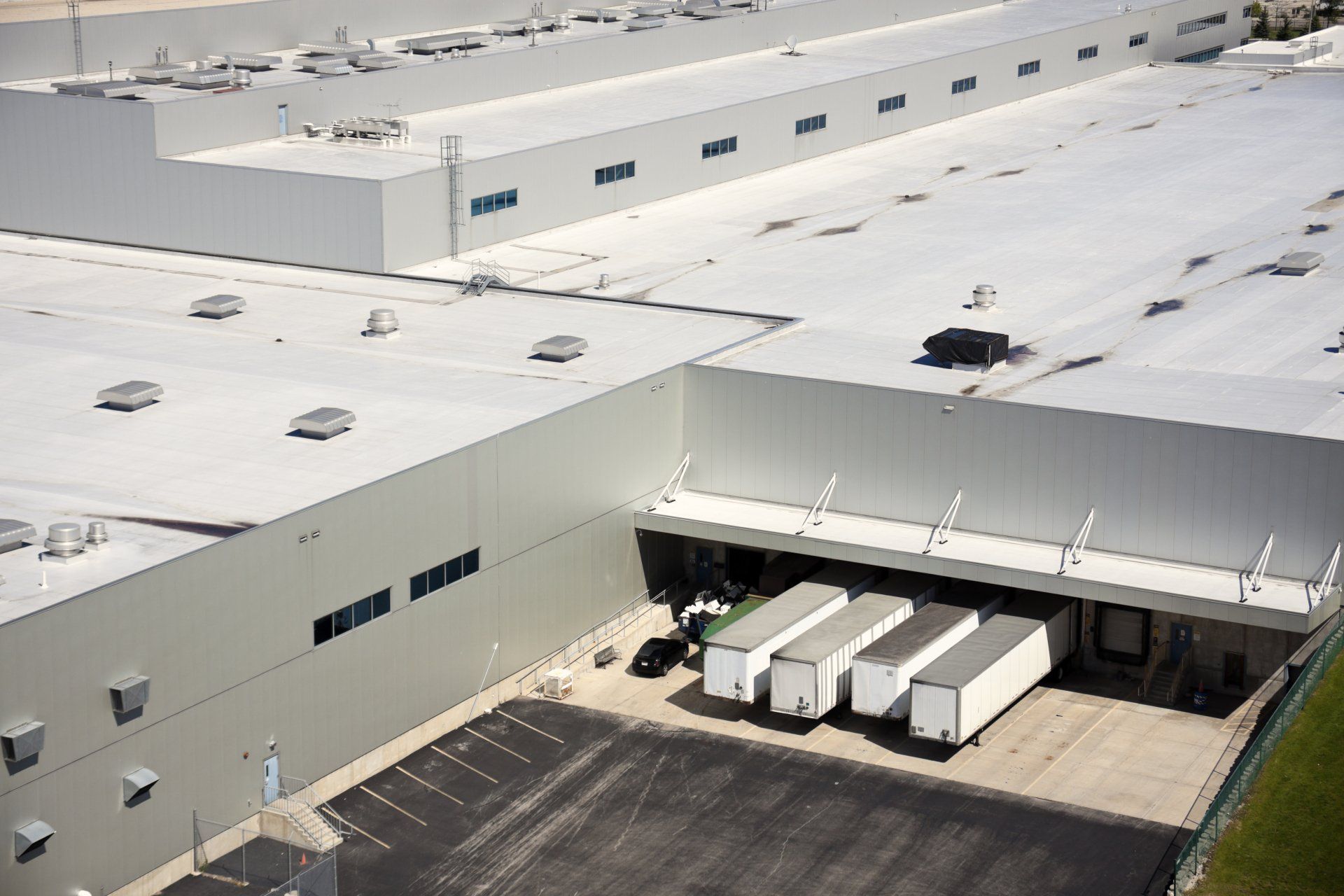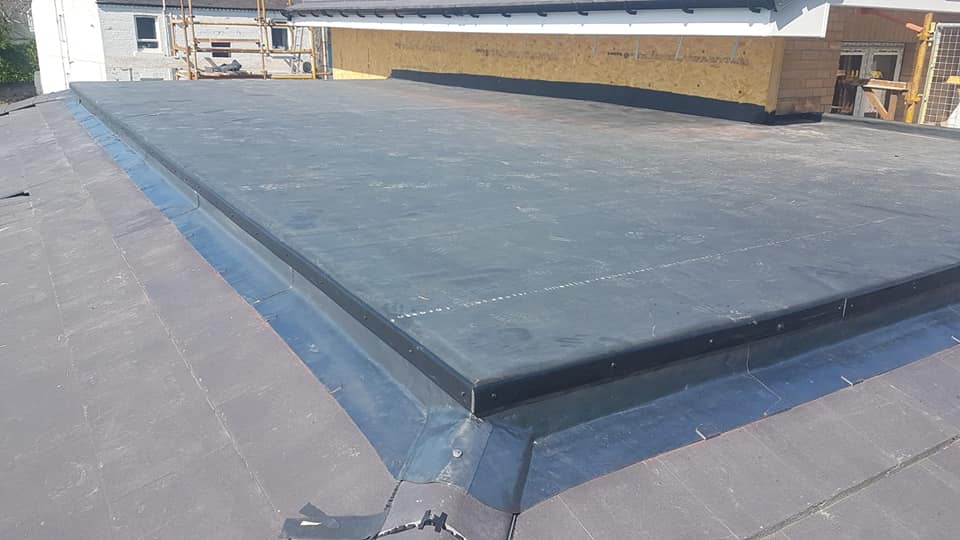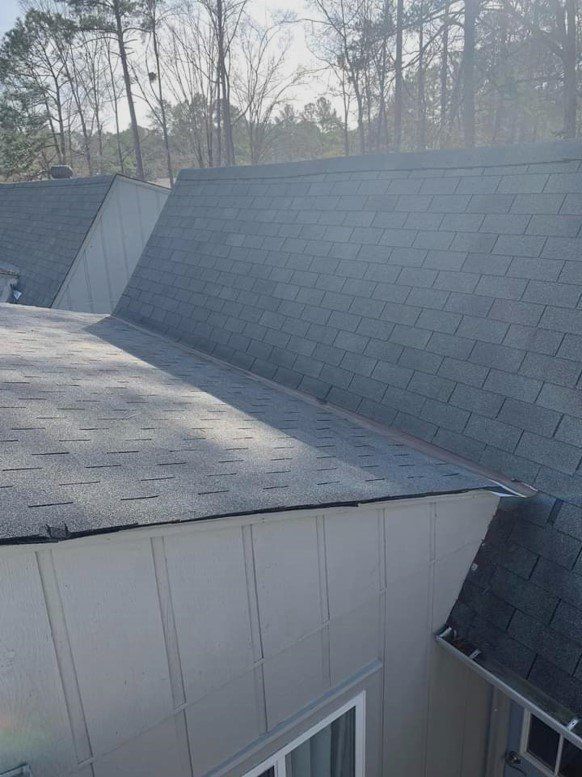Rubber Roofing Experts
Our team of experienced professionals will work with you, whether it’s a new or existing building, we have the expertise to install any type of rubber roofing system on your property.
The rubber roofing is useful in many different areas because it's durable and waterproof. Rubber roofs are often used for low-income housing projects, sporting arenas, car parks or campsites and warehouses but they're also popular among military personnel to cover tent platforms when deployed due to their durability as well as the protection from rain that a fireproof material provides. The downside is that this type of roof requires special skills such as silicone sealant installation which can be an issue considering these materials tend not to have appealing aesthetics like shingle does on any given house.
Rubber roofs are designed to resist tearing, perforation and aging. Although they can last for a period of up to 20 years or more, some roofing materials have shorter lifespans such as PVC which lasts an average between 15-20 years.
The materials used in roofing are diverse and come with a few advantages. The main advantage of these roofing material types is that they will not create holes when it snows heavily, unlike metal or wood shingle roofs. They also do not require annual maintenance which can be costly for other kinds of roofs like steel or slate; however leaks may still happen due to its porous nature so constant vigilance as well as inspections from time to time should take place. One disadvantage including the limited life span (that's why some prefer using them just for low-income housing projects). High installation costs and high material cost are another downside but most people don't mind because their color selection has an impressive range too!One of the best advantages that rubber roofing has is its longevity. Rubber roofs have an average lifespan of 30-50 years, whereas asphalt or metal roofs can only last for about 10 to 15 years before they need new installation.
The main advantage with this material is that it's cheaper than other materials in both long and short terms; when you consider how much more affordable these products are over time due to their extended life span (which saves money down the line), as well as being less expensive at first because there will be no costly repairs needed soon after initial installation like what might happen if one had installed a different option such as ceramic tiles which would eventually require sealing cracks multiple times during said product’s lifetime.
The types of rubber roofing are EPDM roofs, polycarbonate roofing, fiberglass roofing, PVC roofing, rubber roofing membranes, rubber roofing sheets, and rubber roofing shingle coatings. Rubber roofs are usually made with EPDM, PVC-coated fabric or polyurethane foam insulation applied under its top layer so they're lightweight but thick enough for water resistance as well as soundproof properties which eliminates noise pollution caused by exterior sources such as traffic on highways.
Rubber roofing membranes are roofing systems that consist of a roof deck and substrate, insulation system (on cold roofs) and the elastomeric membrane. Rubber roofing membranes are available in standard thicknesses and can be installed on almost any roofing substrate. Rubber roofing membranes are roofing systems that consist of a roof deck and substrate, insulation system (on cold roofs) and the elastomeric membrane. Rubber roofing membranes are available in standard thicknesses and can be installed on almost any roofing substrate.
Rubber roofing membranes find useful application in commercial, industrial and residential roofing. Rubber roofs can be installed on low-slope commercial building structures such as retail malls that offer little risk from wind uplift (they can be installed over new decks) and high impact weather including hail storms and hurricanes providing better watertightness than many other roofing materials.
Rubber roofing shingle coatings refer to roofing materials that are installed in the form of shingles or tiles, and they provide a sound barrier. Rubber roofing shingle coatings are available in standard thicknesses and can be installed on almost any roofing substrate.
EPDM Rubber Roofing
EPDM roofing is a type of rubber roof. It's also among the most expensive types of shingle because it has excellent durability and fire resistance properties. EPDM roofs are among the most environmentally friendly roofing materials, and they also do not require expensive ventilation systems.
EPDM (Ethylene Propylene Diene Monomer) is a rubber roofing material, with Firestone EPDM being a very popular brand. EPDM rubber was introduced into use by NASA for sealing off all joints that could lead to air leaks in the space shuttle. EPDM roofing is a synthetic rubber material that can be used in both commercial and residential applications.
It's an environmentally friendly, energy efficient choice for many homeowners because it heats up quickly to keep your home cool during hot days while also providing you with insulation during the winter months.
This is specialist roofing system that requires professional roofers to install correctly. Contact us today.
This material is primarily used for industrial purposes such as warehouses and storage units, but residential applications have been gaining popularity over time due to their low maintenance costs. Though there are some disadvantages of using EPDM roofs - including a lower wind rating from 50 mph (which may become problematic if your home receives high winds) and higher long term.
EPDM roofs are best applied to residential homes that don't experience high winds, are low-sloped roofs with an inclination no greater than one in ten (ten degrees). EPDM roofing is actually quite common among new construction homes nowadays because it has become more popular over rubberized asphalt shingle (RAS) due to its high resistance against hail and storms.
- The main benefit of an EPDM roof, apart from being fire-resistant and able to withstand hail storms with minimal damage, is that it has the lowest life cycle cost of any roof type. This means that over time you will spend less in maintenance costs than other types such as PVC roofs.
- Another advantage is its low installation cost; though not widely used due to costly upfront expense for labor or materials required, this material still provides good value when comparing long-term costs against other roof types.
- The best part about EPDM roofing is that it can last 25-30 years when installed correctly by professionals! If you're looking for a new roof for your bungalow or condominium unit, consider an environmentally friendly product like EPDM glass reinforced self-adhered membrane (GRSA) as one of your options.
- wide selection of colors available
The limitations of EPDM roofing include the following:
- It should be noted that replacing an EPDM roof can be difficult; you must remove it to complete any fix-ups or replacements with new shingles.
- it can't withstand heavy snow accumulation on top of its surface so if there's going to be a lot of snow then an ice dam could form under the shingle roof which means leaks might happen during wintertime or when residents try to melt off their roofs themselves
- There is the concern of relatively high material cost in comparison to other roof types.
EPDM roofs differ from PVC roofs in the following aspects:
- EPDM roofs are more expensive than PVC roofs.
- EPDM roof installations require a heating system under the roof to prevent premature aging of the rubber membrane and prolong its life span.
- The weight bearing capacity is greater for an EPDM roof than it is for a PVC roof, where in some cases you may need additional structural support with steel beams or posts when installing one over slab construction.
EPDM roofs differ from fiberglass roofs in the following aspects:
- Fiberglass roofs are not breathable, so they can lead to problems with humidity and moisture.
- EPDM rubber roofing is more durable that fiberglass roofing in high UV exposure regions because it doesn't have the same crystalline structure as other types of manmade plastics.
Rubber Roof Repair
EPDM roofs are rubber-like materials that provide protection from ultraviolet rays, water damage and other weathering factors like hail. It's important to typically need repairs for EPDM Roofs due to fading out in color over time as well as cracks in the material where ice can build up during winter months which will lead to more cracking on the surface of your EPDM Roof after spring thaw occurs.
EPDM Rubber Roofing Problems
- The most common problem is deterioration since this type of material has limited life expectancy so when cracks or splits start to form, it means the roof is near the end of its lifespan.
- The second most common problem for EPDM Roofs is a buildup in ice during winter months which can lead to cracks on the surface area that are irreversible after spring thaw occurs when temperatures warm up and melt away any snow accumulations from warmer air currents blowing over your property.
How an EPDM roof is repaired
The best solution for repairing this type of material if you don't want to replace your entire roofing system yet again would be installing a rubber sealant like silicone to help expand out these areas where water has been getting into pieces of insulation materials as well as other places where water damage could have occurred due to leaks with the rubber sealant.
In summary, the problems that can occur in EPDM roof include roof leaks, holes that develop in the roofing material as a result of hail damage or from other sources. The rubber membrane can be replaced due to age and wear with new materials so long as there is enough coverage for water to flow off this type of shingle roof instead of seeping inside into the home's interior .
The problems that often arise when it comes to metal roofs are mainly caused by one thing: corrosion which leads to rust stains on exterior surfaces and also weakening up until point where entire sections collapse outward.
Areas We Cover All Over Nottinghamshire
We continue to promise professional delivery and for this reason, you can be assured if you need a rubber roofing specialist in any of these locations, you can count on us.
Let’s talk about your project
Fill out the form, or call us to set up a discuss or setup a meeting at







